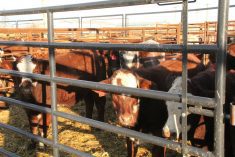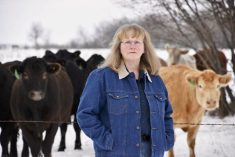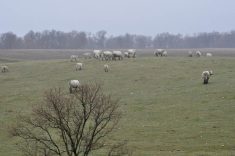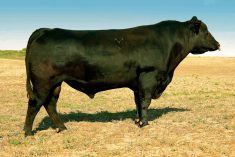“What we’re experiencing are very stable prices.”
– DAVID WI ENS, DFM
Dairy Farmers of Manitoba recently amalgamated their nine regional districts into three. This tripled the size of local milk advisory committees. Some producers feel the committees are now too large and unwieldy.
That was as close to complaining about their industry as milk producers got during an October 14 district meeting.
While hog farmers go broke and cattle producers continue to suffer the after-effects of BSE, dairy farmers chart a slow and steady economic course for their operations.
Read Also
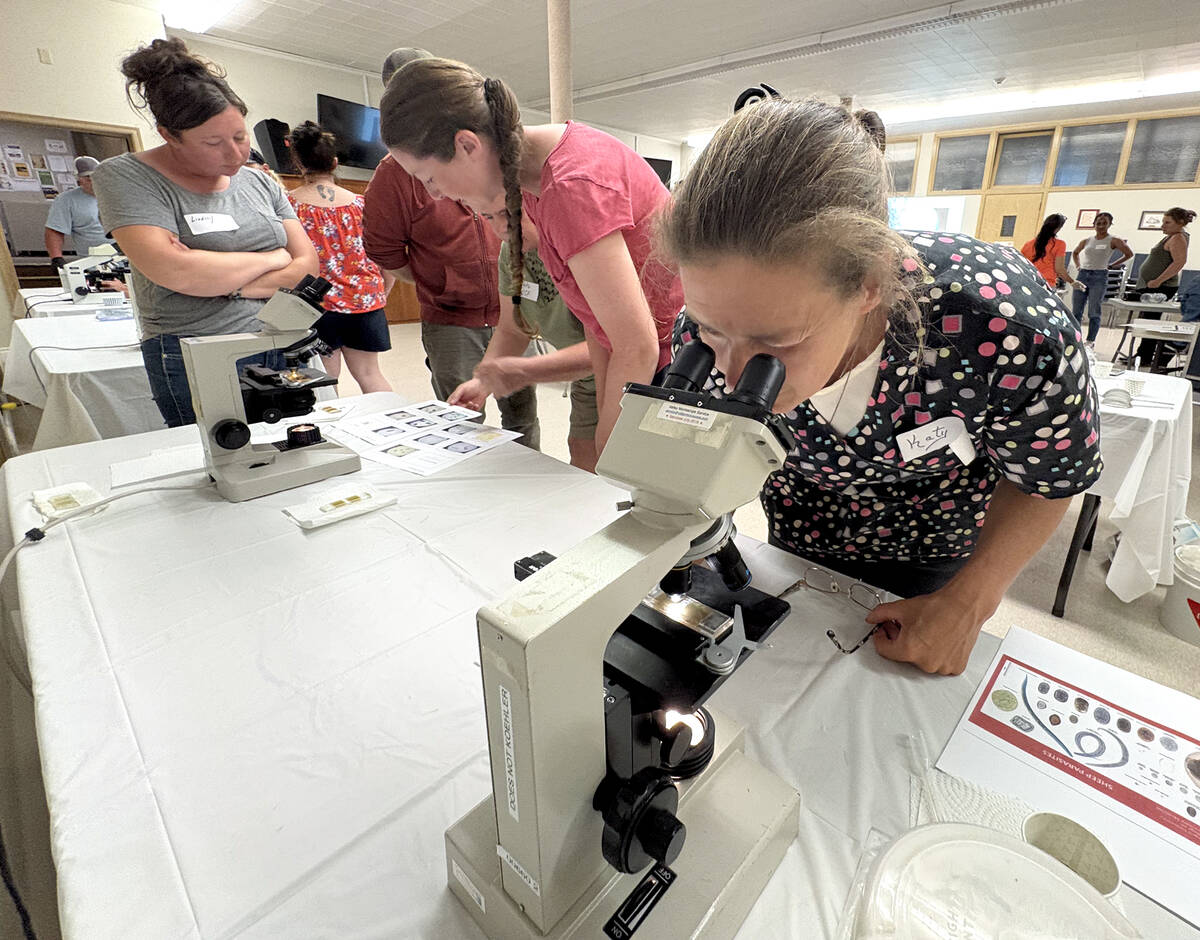
Smart deworming for sheep starts with individual fecal egg counts
Fecal egg count tests are one step to managing dewormer resistance and managing sheep parasites on Canadian sheep farms to maintain flock health.
Producer meetings which used to generate heated discussion and intense debate are unusually low key these days.
“Our industry has been doing well over the last few years and there’s not a lot to discuss,” admitted one producer as DFM’s annual round of fall district meetings wrapped up last week.
PROBLEMS ELSEWHERE
That’s not to say there are no problems in the dairy industry – if you live outside Canada.
An economic crisis stemming from overproduction and low milk prices is ravaging dairy farmers’ incomes and creating industry unrest worldwide.
An extraordinary recent summit meeting of EU farm leaders in Brussels, held while thousands of dairy farmers from across Europe demonstrated noisily outside, failed to produce short-term solutions.
A collapse in milk prices is spurring the U. S. Congress to consider emergency reforms for the American dairy program. Milk prices for 2009 are expected to average two-thirds of last year’s levels while feed costs remain high. “It’s as bad as I’ve seen it in my lifetime,” said one congressman from Wisconsin, America’s No. 2 dairy state.
But Canadian dairy farmers, shielded by import tariffs, regulated prices and production quotas, are so far managing to escape all that.
“What we’re experiencing are very stable prices,” said David Wiens, DFM chairman.
And what do you get with stable prices? “You get peace.”
STABILITY
Figures released at the district meeting tended to reflect stability in Manitoba’s dairy sector.
The province’s dairy herd produced 319.7 million litres of milk in 2008-09, up from 314.8 million litres in 2007-08.
Fluid milk prices rose to $88.62/hl in March 2009 from $85.92 in November 2008. The western milk pool, which includes Manitoba, harmonized fluid milk formula prices earlier this year.
Annual pool returns (before deductions) to producers in 2008-09 were $73.16/hl, up from $70.18 the previous year.
Fluid milk sales, which rose steadily between 2004 and 2007, have levelled off but are still growing marginally. DFM saw fluid sales increase by 0.6 per cent in 2008-09. A 0.5 per cent growth is predicted for 2010-11.
Industrial milk demand is volatile and currently flat. The meeting heard that restaurant sales of dairy foods are down, reflecting the current recession. But retail grocery sales are up as more people tend to eat at home these days.
TRANSPORTATION COSTS
Manitoba’s milk transportation costs, paid by producers to ship bulk milk to processing plants, continued steady at $2.18/hl in 2008-09 – the lowest in Canada.
Producers were told to expect a quota cut for industrial milk this fall because of higher-than-normal butter stocks. DFM issued a daily fluid quota reduction of one per cent in August.
The number of dairy farmers in Manitoba continues to decline. DFM recorded 385 registered producers at the start of August, down from 410 at the beginning of 2008-09. Manitoba loses five per cent of its milk producers a year on average, as smaller producers retire and remaining producers buy more quota.
The average daily quota holding at the end of 2008-09 was 86.31 kg of butterfat, compared to 81.59 kg of butterfat in 2007-08 and 64.27 kg in 2004-05. (One kg of butterfat is roughly equivalent to one lactating cow.)
Wiens cautioned producers the world dairy crisis could still lap over on to Canada’s shores. A combination of low world prices and a strong Canadian dollar could cause cheap imports to breach import tariff walls and undermine domestic prices.
But Ottawa could use special World Trade Organization provisions to stem imports if they do come in despite protective tariffs, Wiens said. [email protected]






